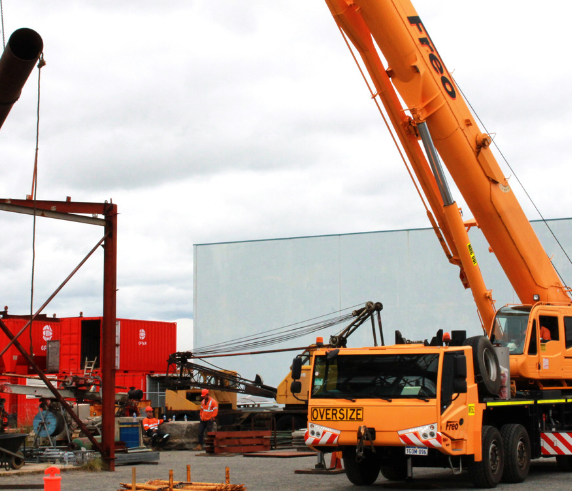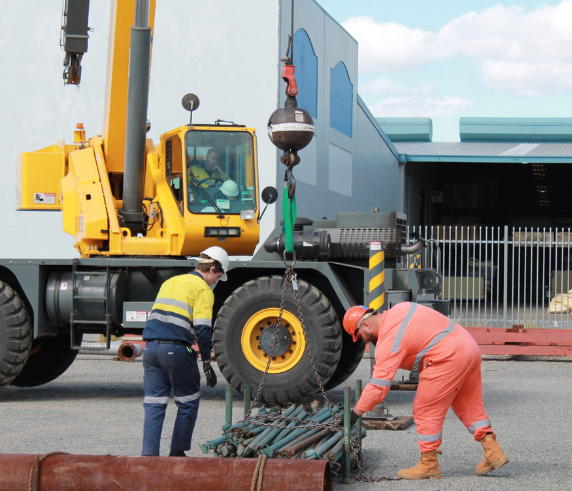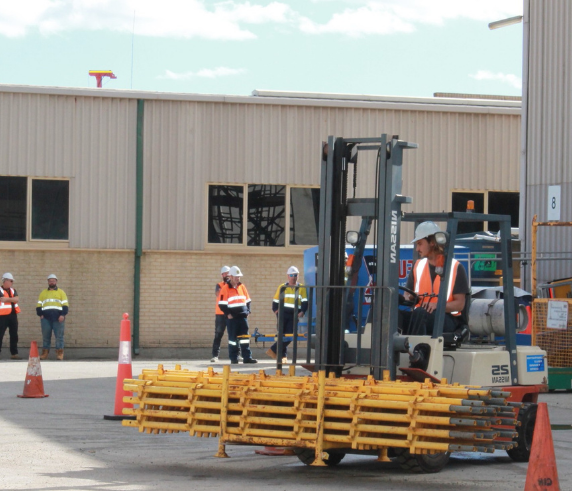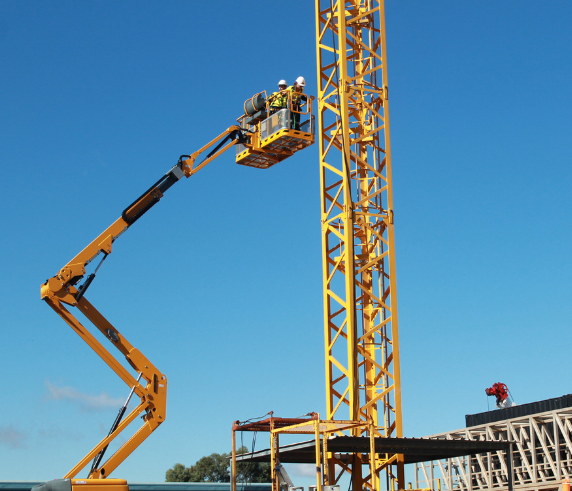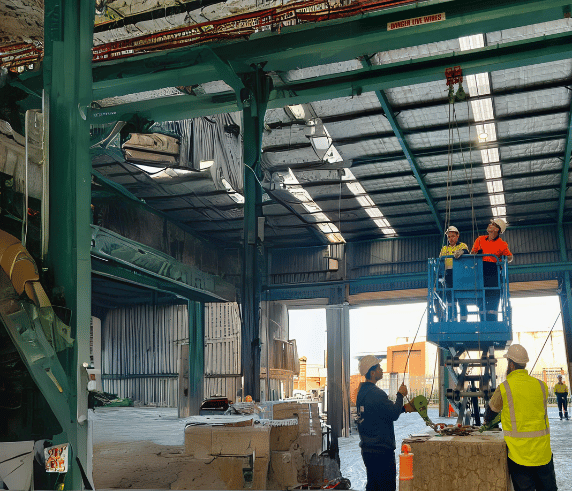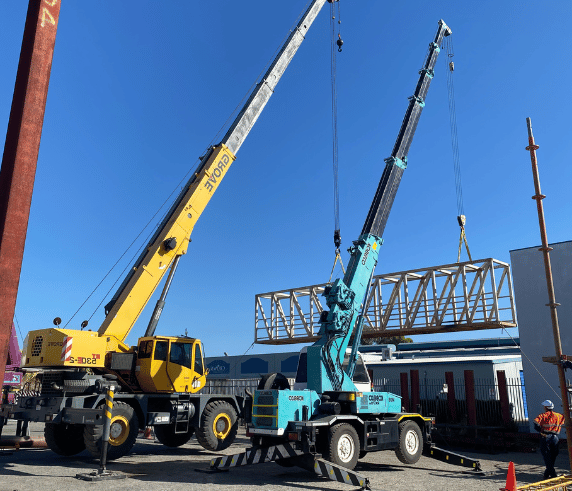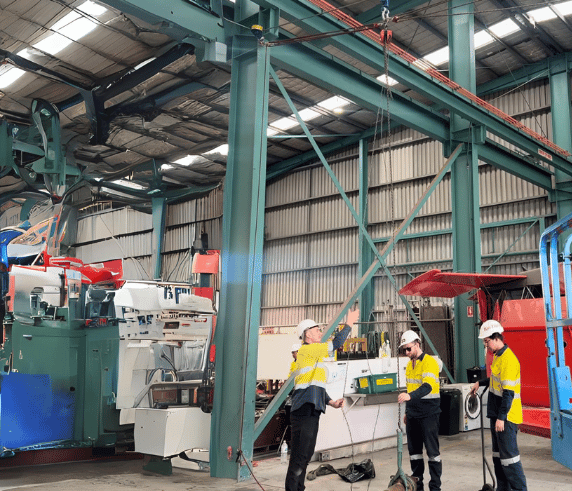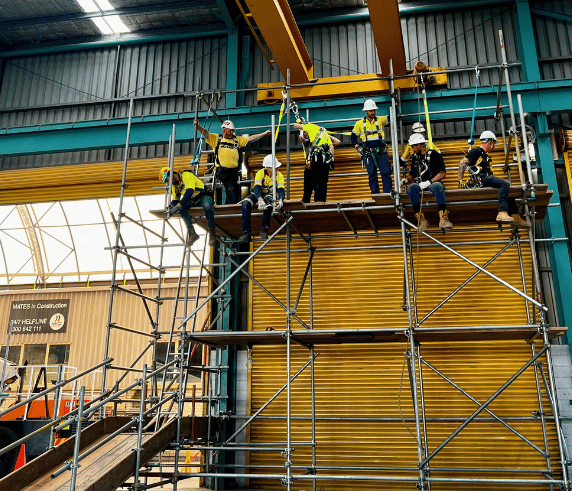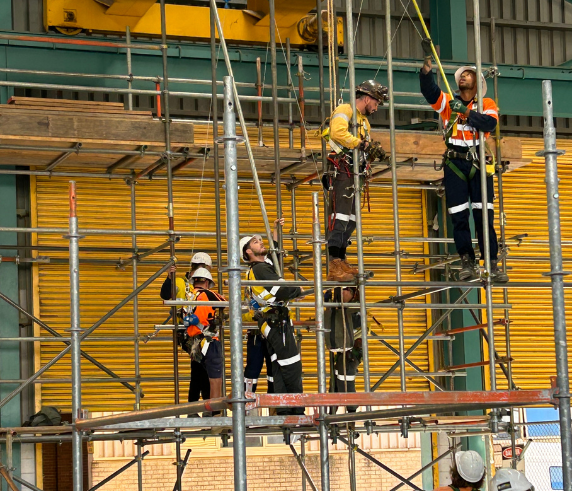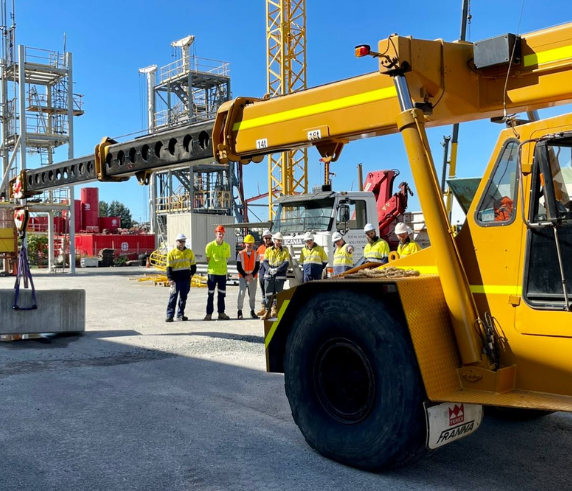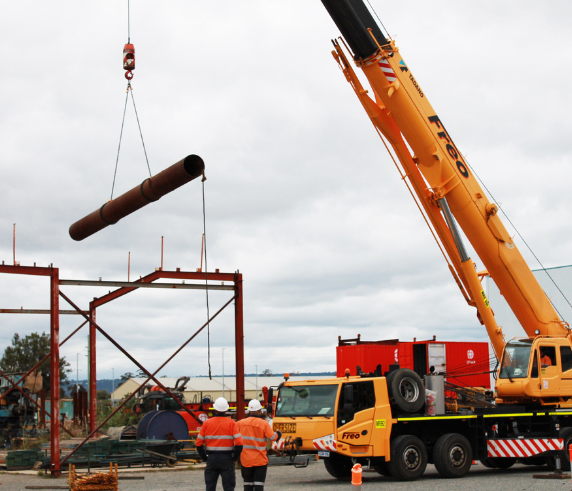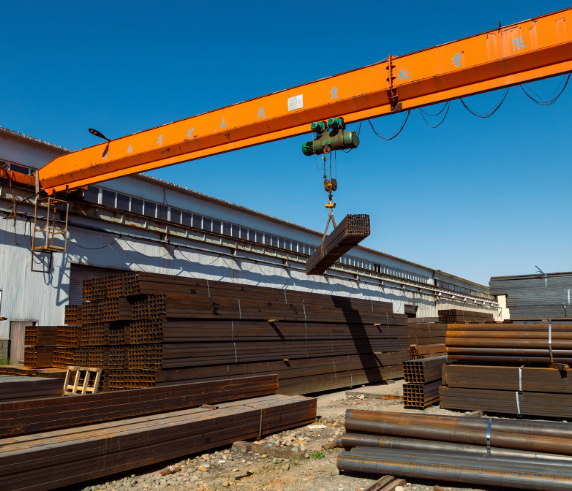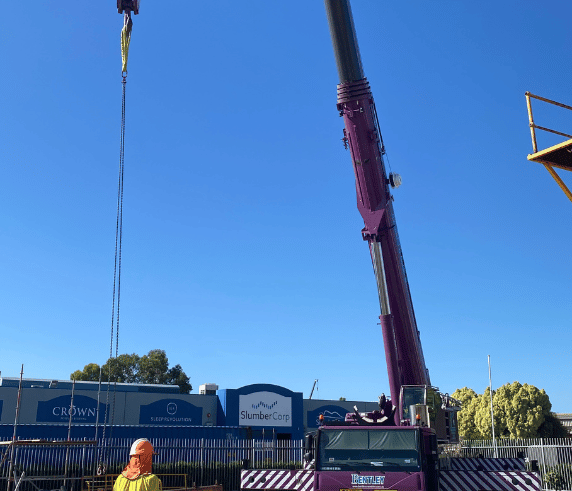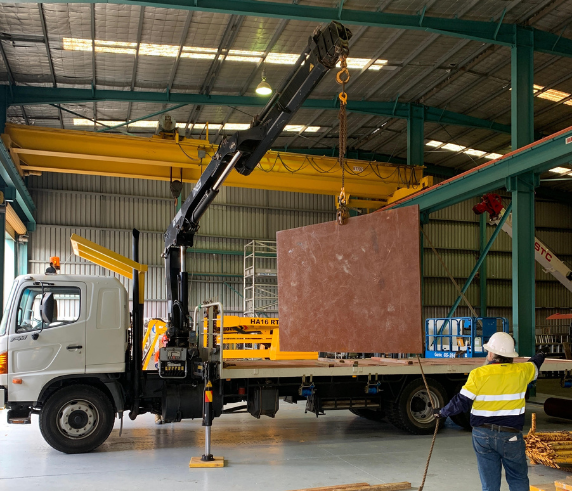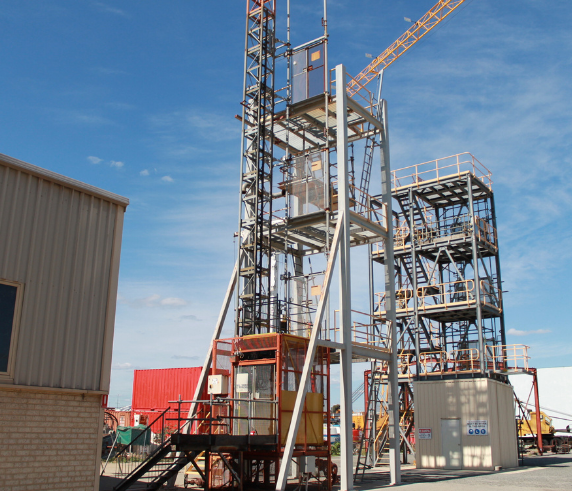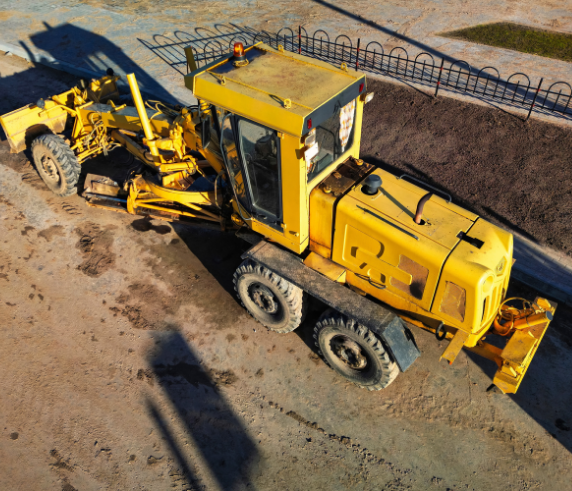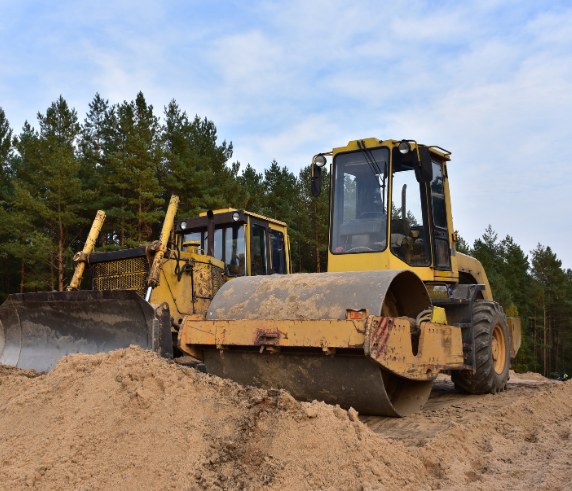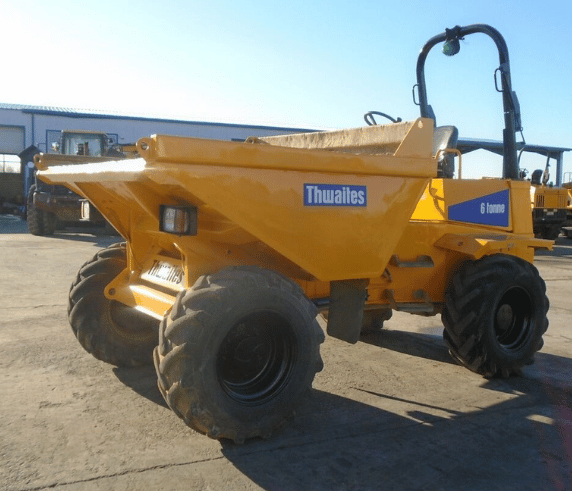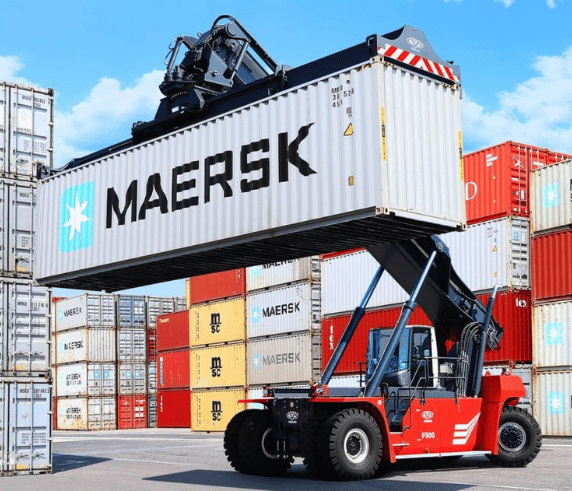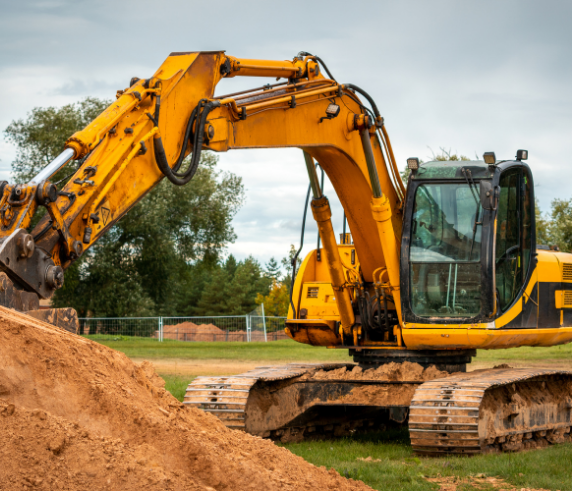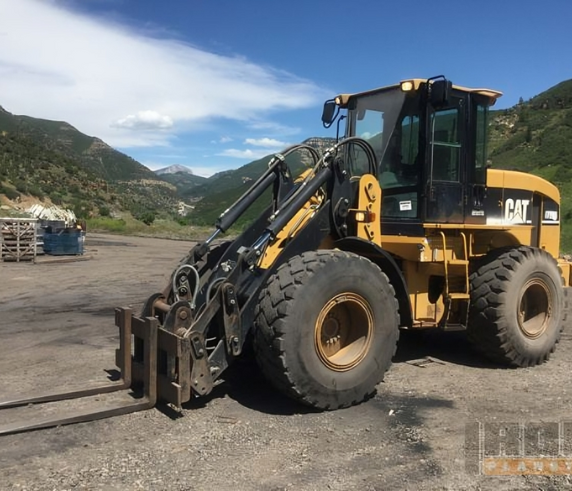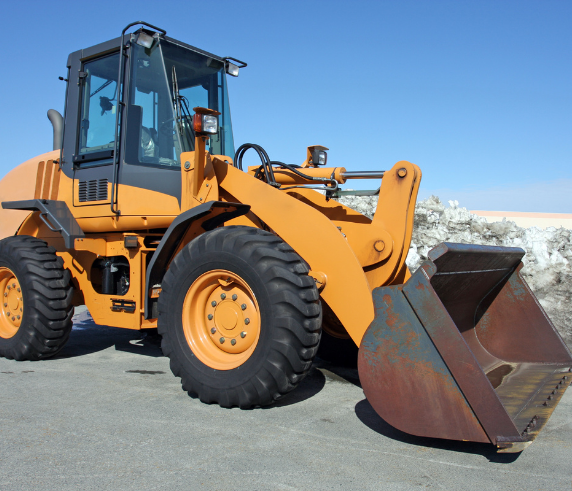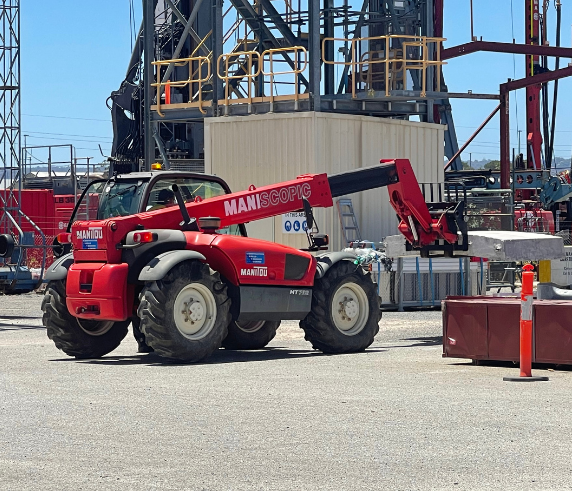All necessary requirements are detailed in the “Entry Requirements” section above. If you are unsure, please submit a ticket by clicking the “Enquire Now” button.
VOC Scaffolding Basic Level
CPCCLSF2001 - VOC IS UNDERTAKEN BY THOSE WHO ALREADY HOLD A CURRENT TICKET, LICENCE OR UNIT OF COMPETENCY, TO VERIFY THAT THEY ARE STILL COMPETENT TO THAT STANDARD
Duration
4 hours
Cost
$300
Pre-Requisite & Requirement
Available Intakes
WelshpoolFremantleBusselton – New Facility!
| Date | Time | Location | Available Spaces | Cost | |
| 18 July 2025 | 07:30 am – 11:30 am | 107 Radium Street Welshpool | 5 | $300.00 | |
| 25 July 2025 | 07:30 am – 11:30 am | 107 Radium Street Welshpool | 5 | $300.00 | |
| 1 August 2025 | 07:30 am – 11:30 am | 107 Radium Street Welshpool | 5 | $300.00 | |
| 8 August 2025 | 07:30 am – 11:30 am | 107 Radium Street Welshpool | 5 | $300.00 | |
| 15 August 2025 | 07:30 am – 11:30 am | 107 Radium Street Welshpool | 5 | $300.00 | |
| 22 August 2025 | 07:30 am – 11:30 am | 107 Radium Street Welshpool | 5 | $300.00 | |
| 29 August 2025 | 07:30 am – 11:30 am | 107 Radium Street Welshpool | 5 | $300.00 | |
| 5 September 2025 | 07:30 am – 11:30 am | 107 Radium Street Welshpool | 5 | $300.00 | |
| 12 September 2025 | 07:30 am – 11:30 am | 107 Radium Street Welshpool | 5 | $300.00 | |
| 19 September 2025 | 07:30 am – 11:30 am | 107 Radium Street Welshpool | 5 | $300.00 | |
| 26 September 2025 | 07:30 am – 11:30 am | 107 Radium Street Welshpool | 5 | $300.00 | |
| 4 October 2025 | 07:30 am – 11:30 am | 107 Radium Street Welshpool | 5 | $300.00 | |
| 10 October 2025 | 07:30 am – 11:30 am | 107 Radium Street Welshpool | 5 | $300.00 | |
| 17 October 2025 | 07:30 am – 11:30 am | 107 Radium Street Welshpool | 5 | $300.00 | |
| 24 October 2025 | 07:30 am – 11:30 am | 107 Radium Street Welshpool | 5 | $300.00 | |
| 31 October 2025 | 07:30 am – 11:30 am | 107 Radium Street Welshpool | 5 | $300.00 | |
| 7 November 2025 | 07:30 am – 11:30 am | 107 Radium Street Welshpool | 5 | $300.00 | |
| 14 November 2025 | 07:30 am – 11:30 am | 107 Radium Street Welshpool | 5 | $300.00 | |
| 21 November 2025 | 07:30 am – 11:30 am | 107 Radium Street Welshpool | 5 | $300.00 | |
| 28 November 2025 | 07:30 am – 11:30 am | 107 Radium Street Welshpool | 5 | $300.00 | |
| 5 December 2025 | 07:30 am – 11:30 am | 107 Radium Street Welshpool | 5 | $300.00 | |
| 12 December 2025 | 07:30 am – 11:30 am | 107 Radium Street Welshpool | 5 | $300.00 | |
| 19 December 2025 | 07:30 am – 11:30 am | 107 Radium Street Welshpool | 5 | $300.00 |
| Date | Time | Location | Available Spaces | Cost | |
| 11 July 2025 | 07:30 am – 11:30 am | 20 Mews Road Fremantle | 5 | $300.00 | |
| 18 July 2025 | 07:30 am – 11:30 am | 20 Mews Road Fremantle | 5 | $300.00 | |
| 25 July 2025 | 07:30 am – 11:30 am | 20 Mews Road Fremantle | 5 | $300.00 | |
| 1 August 2025 | 07:30 am – 11:30 am | 20 Mews Road Fremantle | 5 | $300.00 | |
| 8 August 2025 | 07:30 am – 11:30 am | 20 Mews Road Fremantle | 5 | $300.00 | |
| 15 August 2025 | 07:30 am – 11:30 am | 20 Mews Road Fremantle | 5 | $300.00 | |
| 22 August 2025 | 07:30 am – 11:30 am | 20 Mews Road Fremantle | 5 | $300.00 | |
| 29 August 2025 | 07:30 am – 11:30 am | 20 Mews Road Fremantle | 5 | $300.00 | |
| 5 September 2025 | 07:30 am – 11:30 am | 20 Mews Road Fremantle | 5 | $300.00 | |
| 12 September 2025 | 07:30 am – 11:30 am | 20 Mews Road Fremantle | 5 | $300.00 | |
| 19 September 2025 | 07:30 am – 11:30 am | 20 Mews Road Fremantle | 5 | $300.00 | |
| 26 September 2025 | 07:30 am – 11:30 am | 20 Mews Road Fremantle | 5 | $300.00 | |
| 4 October 2025 | 07:30 am – 11:30 am | 20 Mews Road Fremantle | 5 | $300.00 | |
| 10 October 2025 | 07:30 am – 11:30 am | 20 Mews Road Fremantle | 5 | $300.00 | |
| 17 October 2025 | 07:30 am – 11:30 am | 20 Mews Road Fremantle | 5 | $300.00 | |
| 24 October 2025 | 07:30 am – 11:30 am | 20 Mews Road Fremantle | 5 | $300.00 | |
| 31 October 2025 | 07:30 am – 11:30 am | 20 Mews Road Fremantle | 5 | $300.00 | |
| 5 December 2025 | 07:30 am – 11:30 am | 20 Mews Road Fremantle | 5 | $300.00 | |
| 12 December 2025 | 07:30 am – 11:30 am | 20 Mews Road Fremantle | 5 | $300.00 | |
| 19 December 2025 | 07:30 am – 11:30 am | 20 Mews Road Fremantle | 5 | $300.00 |
| Date | Time | Location | Available Spaces | Cost | |
| 17 July 2025 | 07:30 am – 11:30 am | 12 Caves Road Busselton | 5 | $300.00 | |
| 24 July 2025 | 07:30 am – 11:30 am | 12 Caves Road Busselton | 5 | $300.00 | |
| 31 July 2025 | 07:30 am – 11:30 am | 12 Caves Road Busselton | 5 | $300.00 | |
| 7 August 2025 | 07:30 am – 11:30 am | 12 Caves Road Busselton | 5 | $300.00 | |
| 14 August 2025 | 07:30 am – 11:30 am | 12 Caves Road Busselton | 5 | $300.00 | |
| 21 August 2025 | 07:30 am – 11:30 am | 12 Caves Road Busselton | 5 | $300.00 | |
| 28 August 2025 | 07:30 am – 11:30 am | 12 Caves Road Busselton | 5 | $300.00 | |
| 4 September 2025 | 07:30 am – 11:30 am | 12 Caves Road Busselton | 5 | $300.00 | |
| 11 September 2025 | 07:30 am – 11:30 am | 12 Caves Road Busselton | 5 | $300.00 | |
| 18 September 2025 | 07:30 am – 11:30 am | 12 Caves Road Busselton | 5 | $300.00 | |
| 25 September 2025 | 07:30 am – 11:30 am | 12 Caves Road Busselton | 5 | $300.00 | |
| 2 October 2025 | 07:30 am – 11:30 am | 12 Caves Road Busselton | 5 | $300.00 | |
| 3 October 2025 | 07:30 am – 11:30 am | 12 Caves Road Busselton | 5 | $300.00 | |
| 9 October 2025 | 07:30 am – 11:30 am | 12 Caves Road Busselton | 5 | $300.00 | |
| 16 October 2025 | 07:30 am – 11:30 am | 12 Caves Road Busselton | 5 | $300.00 | |
| 23 October 2025 | 07:30 am – 11:30 am | 12 Caves Road Busselton | 5 | $300.00 | |
| 30 October 2025 | 07:30 am – 11:30 am | 12 Caves Road Busselton | 5 | $300.00 | |
| 6 November 2025 | 07:30 am – 11:30 am | 12 Caves Road Busselton | 5 | $300.00 | |
| 13 November 2025 | 07:30 am – 11:30 am | 12 Caves Road Busselton | 5 | $300.00 | |
| 20 November 2025 | 07:30 am – 11:30 am | 12 Caves Road Busselton | 5 | $300.00 | |
| 27 November 2025 | 07:30 am – 11:30 am | 12 Caves Road Busselton | 5 | $300.00 | |
| 4 December 2025 | 07:30 am – 11:30 am | 12 Caves Road Busselton | 5 | $300.00 | |
| 11 December 2025 | 07:30 am – 11:30 am | 12 Caves Road Busselton | 5 | $300.00 | |
| 18 December 2025 | 07:30 am – 11:30 am | 12 Caves Road Busselton | 5 | $300.00 |
Get $11 voucher on us!
Paid for parking/train? Present your ticket at the front desk to receive $11 voucher for the food truck!
VOC Scaffolding Basic Level overview
This VOC Scaffolding Basic Level assessment confirms that an individual has maintained the skills and knowledge attained as per CPCCLSF2001 Licence to Erect, Alter and Dismantle Scaffolding Basic Level or equivalent

Accredited Units
You will be enrolled into the following VOC course:
| Unit Code | Unit Name |
| CPCCLSF2001 | Licence to erect, alter and dismantle scaffolding basic level |
Entry Requirements
- Must hold a valid high-risk work licence
- Provide a copy of the Statement of Attainment for CPCCLSF2001 Licence to Erect, Alter and Dismantle Scaffolding Basic Level or equivalent
- Present photo I.D. on arrival
- If you have any physical conditions that may affect your ability to complete a course, please visit a doctor and obtain a “Fit for Work” certificate, and send it to our bookings email.
- Please note, Saferight reserves the right to cancel your enrolment if this documentation is not provided and you are deemed unfit for training. Additionally, cancellation fees will apply if adequate notice is not given.
- Wear normal work clothing, enclosed footwear and remove all jewellery prior to commencement
- Ability to read, write and understand English
- Saferight is dedicated to supporting all students, including those with Language, Literacy, and Numeracy (LLN) needs. If your LLN skills are assessed as needing improvement to meet the course requirements, we may recommend additional support or training to help you succeed. If you have any concerns about your LLN skills, we encourage you to contact us before enrolling.
- Individuals holding a student visa are not eligible to enrol in, participate in, or attend this course, whether face-to-face or online, as Saferight is not registered with CRICOS (Commonwealth Register of Institutions and Courses for Overseas Students). Student visa holders are encouraged to seek training with a CRICOS-registered institution to meet their requirements. For more information please click here.
Disclaimer: Students must complete the post-enrolment learner details form sent via the booking confirmation email prior to attending the course. Failure to fill out the post-enrolment form before training will result in certificates not being issued.
Assessment
- Theory Component
- Practical Component
Certification
On successful completion participants will receive a:
- VOC (Verification of Competency) Certificate for Licence to Erect, Alter and Dismantle Scaffolding Basic Level – CPCCLSF2001
Although VOC assessments are conducted in line with the requirements of the relevant nationally recognised unit(s) of competency, they are not considered nationally recognised training.
Amenities
Welshpool Facility
- COFFEE TRUCK available from 9:00am to 9:30am.
- LUNCH TRUCK available from 12:00pm to 12:10pm.
- RADIUM LUNCH BAR is less than 1 minute up the road from the Welshpool premise.
- Students will be provided with morning tea and refreshments for all courses run at Saferight.
- Saferight has kitchen facilities, fridges and microwaves for people who wish to bring their own lunch.
Fremantle Facility
- FOOD TRUCK available from 9:00am to 9:30am (weekdays only).
- Students will be provided with morning tea and refreshments for all courses run at Saferight.
- Saferight has kitchen facilities, fridges and microwaves for people who wish to bring their own lunch.
Busselton Facility
- Students will be provided with morning tea and refreshments for all courses run at Saferight.
- Saferight has kitchen facilities, fridges and microwaves for people who wish to bring their own lunch.
Refund and Cancellation Policy
Please refer to our Refund/Cancellation Policy
Transport & Parking
Welshpool Facility
- Free parking available on-site
Fremantle Facility
- Street-parking is available near the facility with a fee
- If you incur any parking or train ticket fees, simply present your parking/train ticket to our front desk admin. We will happily provide you with a free $11 voucher redeemable at our on-site food truck, which is available every 9 AM on weekdays.
- You can also park at Fremantle Station Car Park 1
- And take the free bus pick-up service to the facility available at 6:45 AM-6:55 AM
- OR, You can also park at Sardine Jetty
- And take the free bus pick-up service to the facility available at 7 AM-7:10 AM
Busselton Facility
- Free parking available on-site
Duration
Up to 4 hours
Fees
Refer to the price listed in the enrolment table.
Group bookings/Onsite training is available at your site or ours. Please click the ‘Enquire Now’ button for further information on pricing and site requirements.
Next Steps
DISCLAIMER
Please be advised that High Risk Work Licence fees will increase for all bookings starting from 1st July 2025 onwards, in line with WorkSafe update.
Available Intakes
WelshpoolFremantleBusselton – New Facility!
| Date | Time | Location | Available Spaces | Cost | |
| 18 July 2025 | 07:30 am – 11:30 am | 107 Radium Street Welshpool | 5 | $300.00 | |
| 25 July 2025 | 07:30 am – 11:30 am | 107 Radium Street Welshpool | 5 | $300.00 | |
| 1 August 2025 | 07:30 am – 11:30 am | 107 Radium Street Welshpool | 5 | $300.00 | |
| 8 August 2025 | 07:30 am – 11:30 am | 107 Radium Street Welshpool | 5 | $300.00 | |
| 15 August 2025 | 07:30 am – 11:30 am | 107 Radium Street Welshpool | 5 | $300.00 | |
| 22 August 2025 | 07:30 am – 11:30 am | 107 Radium Street Welshpool | 5 | $300.00 | |
| 29 August 2025 | 07:30 am – 11:30 am | 107 Radium Street Welshpool | 5 | $300.00 | |
| 5 September 2025 | 07:30 am – 11:30 am | 107 Radium Street Welshpool | 5 | $300.00 | |
| 12 September 2025 | 07:30 am – 11:30 am | 107 Radium Street Welshpool | 5 | $300.00 | |
| 19 September 2025 | 07:30 am – 11:30 am | 107 Radium Street Welshpool | 5 | $300.00 | |
| 26 September 2025 | 07:30 am – 11:30 am | 107 Radium Street Welshpool | 5 | $300.00 | |
| 4 October 2025 | 07:30 am – 11:30 am | 107 Radium Street Welshpool | 5 | $300.00 | |
| 10 October 2025 | 07:30 am – 11:30 am | 107 Radium Street Welshpool | 5 | $300.00 | |
| 17 October 2025 | 07:30 am – 11:30 am | 107 Radium Street Welshpool | 5 | $300.00 | |
| 24 October 2025 | 07:30 am – 11:30 am | 107 Radium Street Welshpool | 5 | $300.00 | |
| 31 October 2025 | 07:30 am – 11:30 am | 107 Radium Street Welshpool | 5 | $300.00 | |
| 7 November 2025 | 07:30 am – 11:30 am | 107 Radium Street Welshpool | 5 | $300.00 | |
| 14 November 2025 | 07:30 am – 11:30 am | 107 Radium Street Welshpool | 5 | $300.00 | |
| 21 November 2025 | 07:30 am – 11:30 am | 107 Radium Street Welshpool | 5 | $300.00 | |
| 28 November 2025 | 07:30 am – 11:30 am | 107 Radium Street Welshpool | 5 | $300.00 | |
| 5 December 2025 | 07:30 am – 11:30 am | 107 Radium Street Welshpool | 5 | $300.00 | |
| 12 December 2025 | 07:30 am – 11:30 am | 107 Radium Street Welshpool | 5 | $300.00 | |
| 19 December 2025 | 07:30 am – 11:30 am | 107 Radium Street Welshpool | 5 | $300.00 |
| Date | Time | Location | Available Spaces | Cost | |
| 11 July 2025 | 07:30 am – 11:30 am | 20 Mews Road Fremantle | 5 | $300.00 | |
| 18 July 2025 | 07:30 am – 11:30 am | 20 Mews Road Fremantle | 5 | $300.00 | |
| 25 July 2025 | 07:30 am – 11:30 am | 20 Mews Road Fremantle | 5 | $300.00 | |
| 1 August 2025 | 07:30 am – 11:30 am | 20 Mews Road Fremantle | 5 | $300.00 | |
| 8 August 2025 | 07:30 am – 11:30 am | 20 Mews Road Fremantle | 5 | $300.00 | |
| 15 August 2025 | 07:30 am – 11:30 am | 20 Mews Road Fremantle | 5 | $300.00 | |
| 22 August 2025 | 07:30 am – 11:30 am | 20 Mews Road Fremantle | 5 | $300.00 | |
| 29 August 2025 | 07:30 am – 11:30 am | 20 Mews Road Fremantle | 5 | $300.00 | |
| 5 September 2025 | 07:30 am – 11:30 am | 20 Mews Road Fremantle | 5 | $300.00 | |
| 12 September 2025 | 07:30 am – 11:30 am | 20 Mews Road Fremantle | 5 | $300.00 | |
| 19 September 2025 | 07:30 am – 11:30 am | 20 Mews Road Fremantle | 5 | $300.00 | |
| 26 September 2025 | 07:30 am – 11:30 am | 20 Mews Road Fremantle | 5 | $300.00 | |
| 4 October 2025 | 07:30 am – 11:30 am | 20 Mews Road Fremantle | 5 | $300.00 | |
| 10 October 2025 | 07:30 am – 11:30 am | 20 Mews Road Fremantle | 5 | $300.00 | |
| 17 October 2025 | 07:30 am – 11:30 am | 20 Mews Road Fremantle | 5 | $300.00 | |
| 24 October 2025 | 07:30 am – 11:30 am | 20 Mews Road Fremantle | 5 | $300.00 | |
| 31 October 2025 | 07:30 am – 11:30 am | 20 Mews Road Fremantle | 5 | $300.00 | |
| 5 December 2025 | 07:30 am – 11:30 am | 20 Mews Road Fremantle | 5 | $300.00 | |
| 12 December 2025 | 07:30 am – 11:30 am | 20 Mews Road Fremantle | 5 | $300.00 | |
| 19 December 2025 | 07:30 am – 11:30 am | 20 Mews Road Fremantle | 5 | $300.00 |
| Date | Time | Location | Available Spaces | Cost | |
| 17 July 2025 | 07:30 am – 11:30 am | 12 Caves Road Busselton | 5 | $300.00 | |
| 24 July 2025 | 07:30 am – 11:30 am | 12 Caves Road Busselton | 5 | $300.00 | |
| 31 July 2025 | 07:30 am – 11:30 am | 12 Caves Road Busselton | 5 | $300.00 | |
| 7 August 2025 | 07:30 am – 11:30 am | 12 Caves Road Busselton | 5 | $300.00 | |
| 14 August 2025 | 07:30 am – 11:30 am | 12 Caves Road Busselton | 5 | $300.00 | |
| 21 August 2025 | 07:30 am – 11:30 am | 12 Caves Road Busselton | 5 | $300.00 | |
| 28 August 2025 | 07:30 am – 11:30 am | 12 Caves Road Busselton | 5 | $300.00 | |
| 4 September 2025 | 07:30 am – 11:30 am | 12 Caves Road Busselton | 5 | $300.00 | |
| 11 September 2025 | 07:30 am – 11:30 am | 12 Caves Road Busselton | 5 | $300.00 | |
| 18 September 2025 | 07:30 am – 11:30 am | 12 Caves Road Busselton | 5 | $300.00 | |
| 25 September 2025 | 07:30 am – 11:30 am | 12 Caves Road Busselton | 5 | $300.00 | |
| 2 October 2025 | 07:30 am – 11:30 am | 12 Caves Road Busselton | 5 | $300.00 | |
| 3 October 2025 | 07:30 am – 11:30 am | 12 Caves Road Busselton | 5 | $300.00 | |
| 9 October 2025 | 07:30 am – 11:30 am | 12 Caves Road Busselton | 5 | $300.00 | |
| 16 October 2025 | 07:30 am – 11:30 am | 12 Caves Road Busselton | 5 | $300.00 | |
| 23 October 2025 | 07:30 am – 11:30 am | 12 Caves Road Busselton | 5 | $300.00 | |
| 30 October 2025 | 07:30 am – 11:30 am | 12 Caves Road Busselton | 5 | $300.00 | |
| 6 November 2025 | 07:30 am – 11:30 am | 12 Caves Road Busselton | 5 | $300.00 | |
| 13 November 2025 | 07:30 am – 11:30 am | 12 Caves Road Busselton | 5 | $300.00 | |
| 20 November 2025 | 07:30 am – 11:30 am | 12 Caves Road Busselton | 5 | $300.00 | |
| 27 November 2025 | 07:30 am – 11:30 am | 12 Caves Road Busselton | 5 | $300.00 | |
| 4 December 2025 | 07:30 am – 11:30 am | 12 Caves Road Busselton | 5 | $300.00 | |
| 11 December 2025 | 07:30 am – 11:30 am | 12 Caves Road Busselton | 5 | $300.00 | |
| 18 December 2025 | 07:30 am – 11:30 am | 12 Caves Road Busselton | 5 | $300.00 |
I’ve gone through all my HRW training through Saferight. Absolutely wonderful trainers!!
Very good happy place to do your training, the instructors are just lovely.. very professional, they made you feel welcome and relaxed , answered all my questions, very satisfied
Best training center around Perth, quality, educational and best value for money course!
Very knowledgeable and enjoyable as far as training courses go, would recommend to anyone interested in furthering their training.
I had the privilege of attending the Advanced Scaffolding course at Saferight Training, and let me tell you, it was an absolute blast!
Confined spaces was great all the trainers are experienced and competent here
Finished a Tele-Handler course here a few weeks ago, and after finishing a rigging course at one of the other major training companies in Perth I have to say Saferight is definitely the better of the two..
Very good experience and the training was informative, the instructor presented well. The practicals were set up really well also
The 4WD course was very informative, particularly the practical aspect which developed fundamental skills for traversing rough terrain!
Very interesting course. Gives you confidence in learning to trust the vehicles and confidence in driving off-road - 4WD.
Frequently Asked Questions
-
-
If you see a green tick under ‘Funding’ at the top of the page and a ‘CTF Funding Available’ box beneath the enrolment table, the course is funded by CTF. If these indicators are absent, the course is not CTF-funded. For more information about CTF, click here.
-
All courses run at Saferight are Nationally Accredited in Australia, except for permit issuers, Height Safety Supervisor, and courses under the VOC category.
-
Your certificate will be available in 2-3 business days after you’ve completed the course. Our admin team will also send you the PDF version via email. If you have any inquiries related to your certificate, please click the ‘Enquire Now’ button.
Related Posts
-
New Requirement: Valid RIIWHS204E Work Safely at Heights Ticket
To enrol in Saferight’s scaffolding courses, whether they are basic, intermediate, or advanced, students must now hold a valid RIIWHS204E Work Safely at Heights ticket. This requirement is not a government regulation, but rather a Saferight-specific policy designed to improve safety and reduce accidents during training.

Why is the RIIWHS204E Ticket a Scaffolding Course Requirement?
Scaffolding work involves working at extreme heights, using harnesses, and operating complex equipment. To ensure safety and effectiveness during training, it is essential that students have a solid understanding of height safety principles before advancing to more complex aspects of scaffolding work. Here are the key reasons why this knowledge is crucial for the requirement:
1. Fosters a Safer Learning Environment
Students who already understand working at heights contribute to a controlled, secure, and effective training environment. Instructors can confidently guide students through more complex scaffolding tasks, knowing that height safety basics are already in place.
2. Understanding Safety Procedures for Heights
Students must be familiar with basic safety procedures related to working at heights. This includes the use of personal protective equipment (PPE), fall arrest systems, and emergency protocols. Having this knowledge beforehand helps prevent accidents and ensures students’ safety throughout the course since it meets the requirement for scaffolding training.
3. Reduced Risk of Accidents
Knowing how to safely work at heights minimizes the risk of falls and other dangerous incidents that can occur during scaffolding training. This foundational safety training is essential for meeting the scaffolding requirements and protecting both students and instructors during practical sessions.
4. Ensures Smooth and Safe Training
By ensuring that all students are already familiar with height safety principles, instructors can focus on teaching more advanced scaffolding techniques rather than revisiting basic safety procedures. This helps the training run smoothly without disruptions, creating a more effective learning environment in line with the requirement for scaffolding courses.

What if I Don’t Have a Work Safely at Heights Ticket?
If you do not yet have a valid WSAH ticket, don’t worry! You can still enrol in our Work Safely at Heights course on available dates to meet the requirement before moving forward with your scaffolding training. This course will give you the foundational knowledge needed for safe practices while working at heights.
Already Have a WSAH Ticket, but Need a Refresher?
If you completed your WSAH training a while ago and need a refresher, we also offer a Work Safely at Heights Refresher Course. This course is perfect for those who want to ensure their skills and knowledge are up-to-date before beginning the scaffolding training. The refresher course will cover the latest safety protocols, regulations, and practices to make sure you’re fully prepared for the scaffolding requirement.
Ready To Become A Scaffolder?
At Saferight, we’re always looking for ways to improve the quality and safety of our training. We believe that by setting this requirement, we are ensuring that our students are properly prepared to take on the challenges of working at heights and scaffolding. This is one of the many ways we strive to provide high-quality, industry-leading training for the mining and construction sectors.
If you’re interested in enrolling, or if you have any questions about this new requirement for scaffolding, feel free to reach out to our team or check our website for available dates and further details on the WSAH and Scaffolding courses.
-
Are you considering a career in scaffolding in Australia? Scaffolding is a vital part of the construction and maintenance industries, offering stable employment, growth opportunities, and competitive earnings. This guide covers everything you need to know about becoming a scaffolder, potential career pathways, and how much you can earn in this field.
What Does a Scaffolder Do?
Scaffolders are essential to the construction industry, taking on a variety of responsibilities to ensure that workers can perform tasks safely at heights. Here’s a straightforward look at what they do:
- Work Environment: Scaffolders often work at significant heights, in various weather conditions, and may need to work longer hours to meet deadlines.
- Planning and Inspection: Scaffolders begin by inspecting the site and calculating the type of scaffolding needed for the project.
- Assembly: They unload scaffolding materials, assemble the framework using tubing and braces, and attach necessary components like ladders and rails.
- Maintenance: Scaffolders regularly check and maintain scaffolding equipment to ensure everything is in safe working order.
- Safety Checks: They inspect the scaffolding structures throughout the project to make sure they comply with safety standards.
- Dismantling: Once the job is complete, scaffolders take down the scaffolding and store the materials properly.
Earnings Potential
In Australia, the salaries of a scaffolder vary based on experience, qualifications and industry.
- Entry-level Scaffolders: Typically earn between $70,000 and $90,000 per year in Australia.
- Experienced Scaffolders: Can earn around $120,000 and $150,000 per year in Australia. If you have the advanced qualifications, you can also secure a job in the offshore mining industry and earn up to $300,000 per year.
- Supervisors, Inspectors and Trainers: Salaries can exceed $150,000 and $300,000 per year in Australia per year, especially in high-demand sectors like mining and offshore oil and gas.

Steps to Become a Scaffolder
1. Gain Qualification
To become a scaffolder, first you need to learn the skills and get the necessary qualifications from a training organisation or by doing a traineeship. While there are benefits for both education pathways, a traineeship can take 12 months to gain a qualification, whereas if you went through an RTO (Registered Training Organisation) course you can gain a qualification within 4 to 5 days.
Saferight Training Academy is an RTO that offers top-tier scaffolding courses in Western Australia, designed for all skill levels:
- Basic Scaffolding (SB): Learn the fundamentals of scaffolding, including how to erect, alter, and dismantle basic scaffolding systems.
- Intermediate Scaffolding (SI): Gain advanced skills in managing more complex scaffolding structures, such as cantilevered and spurred scaffolds.
- Advanced Scaffolding (SA): Master specialised scaffolding systems, including hung and suspended scaffolds.
- Combo Scaffolding (SIA): Learn intermediate and advanced scaffolding skills within a week and accelerate your career faster!
Want to understand the distinctions between Basic, Intermediate, and Advanced levels? Check out our detailed blog post on the differences between scaffolding levels to learn more.
2. High Risk Work Licence (HRWL) for Scaffolding
- Why It’s Important: After completing the necessary training and earning your qualifications, the next crucial step is obtaining a High-Risk Work Licence. This licence is mandatory for all scaffolding work in Australia, ensuring that only trained and competent individuals are allowed to perform high-risk tasks.
- How to Obtain the Licence: You can apply for this licence through WorkSafe or via the training organisation where you completed your scaffolding qualification. Saferight offers this service with a separate fee, making it easier for you to get licensed and start working right after you get your qualifications.
3. Obtain a White Card
- What is a White Card? The White Card, or also known as the ‘Construction Induction Training Card’, is an essential certification for anyone intending to work in the construction industry in Australia. It proves that you have completed the necessary general construction induction training, focusing on workplace health and safety (WHS) standards.
- Why is it Important? Without a White Card, you cannot legally work on a construction site in Australia. It ensures that all workers understand the fundamental safety practices required to maintain a safe working environment, reducing the risk of accidents and injuries on site.
- How to Get a White Card: To obtain your White Card, you must complete a short course provided by a registered training organisation (RTO). The course typically takes a day and covers essential topics such as identifying and managing risks, understanding safety laws, and knowing how to respond to potential hazards.
- Where to Apply: White Card courses are widely available across Australia, and usually offered by Registered Training Organisations. The course code that you should search for is called ‘Prepare to work safely in the construction industry – CPCCWHS1001’ . Once you successfully complete the course, you will receive a White Card that is recognised across the country, allowing you to work on any construction site in Australia.
4. Start Building Your Resume
With all the necessary licences and qualifications in hand, it’s time to start building your resume. Many companies are open to hiring individuals with little to no experience, often providing on-the-job training as you embark on your career. This is a great opportunity to gain practical experience and grow your skills in a real-world environment.
Why Choose Saferight?
Saferight is a leading provider of high-risk work training in Western Australia, known for its comprehensive and industry-compliant courses. By choosing Saferight, you’ll acquire the skills and qualifications needed to advance in your career, ensuring you work safely and efficiently.
Ready to start your career? Enrol in one of Saferight’s expert-led courses today and take the first step towards a rewarding career in scaffolding.
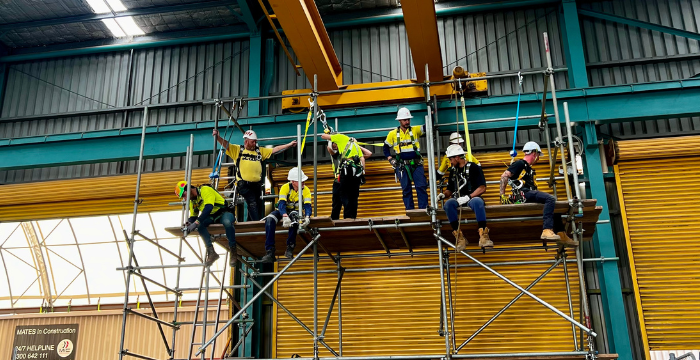
-
Scaffolding Basic, Scaffolding Intermediate, and Scaffolding Advanced are essential courses for anyone pursuing a career in the highly rewarding and in-demand scaffolding industry in Australia. These courses offer excellent earning potential and opportunities to work in various sectors.
At Saferight, we provide nationally accredited courses tailored to help you get started and advance your career. Below, we’ll break down the different levels of scaffolding courses available, so you can choose the one that best suits your career goals.
1. Scaffolding Basic: The Starting Point for Residential Work
Course Overview:
- Duration: 4 or 5 days
- Cost: $875
- Accreditation: Nationally accredited (CPCCLSF2001 – Licence to erect, alter and dismantle Scaffolding Basic Level)
- Delivery Method: Face-to-face
Why Enrol in the Basic Course?
- Comprehensive Skills Training: Learn how to safely erect and dismantle various types of scaffolding, including modular or fabricated scaffolds, materials hoists, gin wheels, safety nets, and static lines.
- Master the Modular Technique: Gain practical knowledge in the modular technique, which involves constructing scaffolding structures from the ground up.
- Tailored for Residential Projects: This course is ideal for those looking to start a career in residential and housing construction, where scaffolders play a vital role in ensuring safety and efficiency.
- Attractive Earning Potential: With a basic scaffolding qualification, you can earn between $70,000 and $90,000 per year in Australia, making this a lucrative entry-level opportunity.
Perfect for Beginners
If you’re new to scaffolding, this course is the best starting point. You’ll learn the fundamental skills of scaffolding, both in theory and hands-on practice. Plus, you’ll be in a supportive learning environment, working alongside a group of 8-10 people who are just as new to the field as you are.
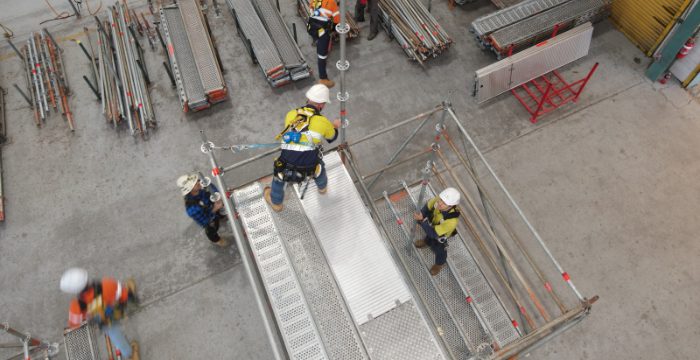
2. Scaffolding Intermediate: Advance Your Skills for Industrial Work
Course Overview:
- Duration: 4 or 5 days
- Cost: $950
- Accreditation: Nationally accredited (CPCCLSF3001 – Licence to erect, alter and dismantle Scaffolding Basic Level)
- Delivery Method: Face-to-face
Why Enrol in the Intermediate Course?
- Intermediate Skills Training: This course teaches you how to safely erect and dismantle more complex types of scaffolding, including cantilevered platforms, barrow ramps, safety screens, mast climbers, and tube and coupler scaffolds, which are commonly used in industrial settings.
- Master the Tube and Fit Technique: Gain in-depth knowledge of the tube and fit technique, essential for industrial and city-based projects.
- Ideal for Industrial and Urban Construction: Perfect for those aiming to work on industrial sites or in urban environments, where more advanced skills are required.
- Significant Earning Potential: With an Intermediate ticket, you can earn between $120,000 and $150,000 per year in Australia, opening doors to higher-paying job opportunities. It makes you more competitive in the job market, giving you an edge over those with only a basic qualification. This increased skill set allows you to take on more complex projects and secure better-paying jobs.
Prerequisite for the Intermediate Course:
To enrol in this course, you must first have completed the Scaffolding Basic course and obtained the CPCCLSF2001 certification. This ensures you have the foundational knowledge required to succeed in more advanced training.

3. Scaffolding Advanced: Become an Expert in Complex Structures & Offshore Rigging
Course Overview:
- Duration: 4 or 5 days
- Cost: $1,300
- Accreditation: Nationally accredited (CPCCLSF4001 – Licence to erect, alter and dismantle scaffolding advanced level)
- Delivery Method: Face-to-face
Why Enrol in the Advanced Course?
- Expert-Level Skills Training: This course equips you with the ability to erect, operate, and dismantle advanced systems, including cantilevered hoists, hung scaffolds (using chains, wire ropes, or tubes), and suspended scaffolds with dual needle systems and powered winches.
- Master the Hung Technique: Learn the sophisticated hung scaffold technique, where scaffolding is built from the structure down—an essential skill for complex and challenging projects.
- Excel in Large-Scale Projects: This course is ideal for experienced scaffolders who want to work on major, high-profile projects, including offshore rigs and other complex structures.
- Maximise Your Earning Potential: With advanced skills, you can earn between $150,000 and $300,000 per year in Australia, positioning yourself for top-tier job opportunities in the industry.
Prerequisites for the Advanced Course:
To enrol in this course, you must have successfully completed:
- The Scaffolding Basic course (CPCCLSF2001)
- The Scaffolding Intermediate course (CPCCLSF3001)
By completing the Scaffolding Advanced course, you’ll become a true expert in the field, capable of handling the most complex and demanding scaffolding projects. This qualification will open doors to prestigious and lucrative positions, including opportunities in offshore rigging and other specialised areas.
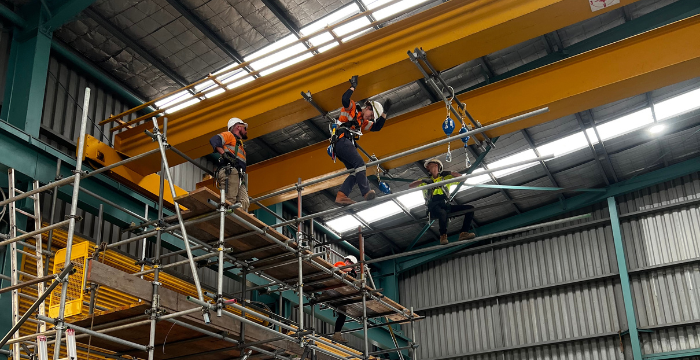
4. Scaffolding Intermediate and Advanced Combo: Fast-Track Your Career
Course Overview:
- Duration: 6 days
- Cost: $2,200
- Accreditation: Nationally accredited (CPCCLSF3001 & CPCCLSF4001)
- Delivery Method: Face-to-face
Why Enrol in the Scaffolding Combo Course?
- Get Both Licenses Quickly: Complete both the intermediate and advanced courses in just 6 days.
- Comprehensive Training: Receive comprehensive instruction on both the tube and fit technique and the hung scaffold technique, equipping you with a broad skill set for various complex projects.
- Maximise Your Earnings: With both qualifications, you can significantly increase your earning potential in the scaffolding industry.
Prerequisite for the Combo Course:
To enrol in this course, you must first have completed the Scaffolding Basic course and obtained the CPCCLSF2001 – Licence to Erect, Alter, and Dismantle Scaffolding Basic Level.
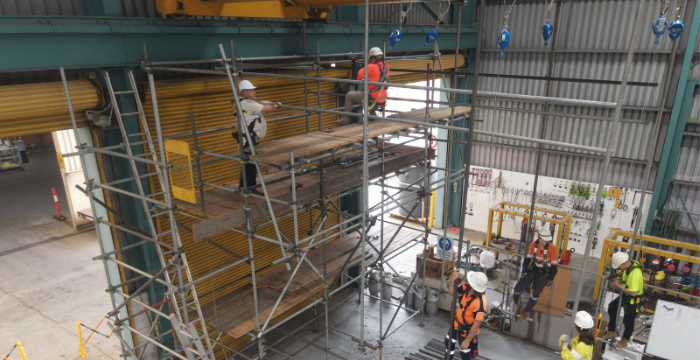
Why Choose Saferight for Your Training?
At Saferight, we offer high-quality training with experienced instructors, ensuring you gain the necessary skills and knowledge to excel in the scaffolding industry. All our courses are nationally accredited and designed to meet the rigorous demands of the Australian construction industry.
Get All Three Licenses in Just Two Weeks!
For those eager to fast-track their career, start with the Basic course and then move on to the Combo course. Within just two weeks, you can obtain all three licenses and position yourself as a top candidate in the industry.
Visit our website to learn more about our courses and start your journey toward a successful career. With Saferight, your future in the industry is bright.
-
How to Become a Scaffolder in Australia
Rigging
While a standard scaffolder will need additional training and instruction to be effective in rigging, their scaffolding experience will help them in this profession.
To lift big structural objects, riggers employ mechanical systems like derricks and jibs.
Construction scaffolding
Scaffolders are required to install scaffolds whenever construction workers need to repair or replace the facades of tall buildings. They provide a working platform for laborers and construction team members.
Scaffolds must be strong enough to hold these employees, as well as their construction tools and some building materials. A scaffolder in the construction business is normally required to have some additional industry and job-specific abilities.
Music and entertainment scaffolding
Scaffolders are needed for a variety of events in the music and entertainment industries.
They build structures for events such as fashion shows, industry awards ceremonies, and music concerts. In these events, they typically work for companies that provide services to the entertainment industry.
Scaffolders in this category also construct tiered seating and stand for public events such as concerts and sporting events.
Whatever the project, the scaffolder is in charge of inspecting the area and determining what type of scaffolding is needed. After that, the scaffolder unloads it and joins the braces and tubing to form the frameworks that will eventually become the scaffold. He will assemble all of the scaffold’s components, including ladders and rails.
The work doesn’t just end there. Scaffolders are usually tasked to check and maintain scaffolding equipment throughout its use. They inspect the scaffolding structure to ensure it is safe to use and eventually take it down after the work is done.
What Does It Take to Be A Scaffolder in Australia?
A scaffolder needs a High-Risk working license. The occupation is viewed as dangerous because of the extraordinary statures and different ecological conditions included. Scaffolders should accordingly be aware of wellbeing and word-related security prerequisites to limit hazards. To be successful in this field, you need to have these attributes:
- Physical strength – scaffolding is physically demanding. You need to be fit and strong to do the job well.
- Planning and organization skills.
- Problem-solving skills.
- Teamwork skills.
- Conscientiousness to follow safety procedures – by nature, the job involves working at heights. There are also other risks of heavy objects, construction working with tools and chemicals. An exceptional health and safety awareness is therefore essential.
- Ability to take and follow instructions – scaffolding requires attention to detail and a great level of concentration.
Training Pathways for Scaffholders
Like any discipline, a career in scaffolding requires some form of education. To become a qualified scaffolder, you need to learn the following:
A Nationally Accredited Course in Scaffolding
There might be numerous pathways to being a certified scaffolder. The beginning stages of this profession are the most important as these pave the foundation, guidelines, and best practices in the industry.
Gain important trade knowledge
- When you have the essentials, it’s vital to choose to fortify your abilities. This might include taking up functional undertakings in the platform, regularly through apprenticeships or hands-on preparing.
- You’ll enter a proper preparation contract with a business as a student or learner. A tremendous lump of your time goes into working and acquiring pragmatic abilities expected on the platform work. You likewise invest some energy taking up organized preparation with a picked enlisted preparing supplier to sharpen your abilities.
Saferight is a Registered Training Organisation (RTO Code 5722) conducting Scaffolding Training (All Levels – Basic, Intermediate and Advanced)
Each course level consists of a Theoretical Assessment and a Practical Assessment of which you will acquire the Units of Competency for the following:
- CPCCLSF2001 – Licence to Erect, Alter and Dismantle Scaffolding Basic Level
- CPCCLSF3001 – Licence to Erect, Alter and Dismantle Scaffolding Intermediate Level
- CPCCLSF4001 – Licence to Erect, Alter and Dismantle Scaffolding Advanced Level
Our Nationally Recognised Training is conducted by professional and experienced WorkSafe Approved Instructors in our facility in Welshpool.
For more information or group bookings, please visit our page or call us at 1800 352 335.
-
Being a Scaffolder in Australia
Scaffolders have the advantage of being able to work on a diverse range of projects and environments. To be effective, you must be able to plan and construct working platforms as well as create scaffolding for a variety of building tasks.
RIGGING
While a standard scaffolder will need additional training and instruction to be effective in rigging, their scaffolding experience will help them in this profession. To lift big structural objects, riggers employ mechanical systems like derricks and jibs.
CONSTRUCTION SCAFFOLDING
Scaffolders are required to install scaffolds whenever construction workers need to repair or replace the facades of tall buildings. They provide a working platform for laborers and construction team members.
Scaffolds must be strong enough to hold these employees, as well as their construction tools and some building materials. A scaffolder in the construction business is normally required to have some additional industry and job-specific abilities.

MUSIC AND ENTERTAINMENT SCAFFOLDING
Scaffolders are needed for a variety of events in the music and entertainment industries.
They build structures for events such as fashion shows, industry awards ceremonies, and music concerts. In these events, they typically work for companies that provide services to the entertainment industry.
Scaffolders in this category also construct tiered seating and stand for public events such as concerts and sporting events.
Whatever the project, the scaffolder is in charge of inspecting the area and determining what type of scaffolding is needed. After that, the scaffolder unloads it and joins the braces and tubing to form the frameworks that will eventually become the scaffold. He will assemble all of the scaffold’s components, including ladders and rails.
The work doesn’t just end there. Scaffolders are usually tasked to check and maintain scaffolding equipment throughout its use. They inspect the scaffolding structure to ensure it is safe to use and eventually take it down after the work is done.

What Does It Takes to Be A Scaffolder?
A scaffolder needs a High-Risk working license. The occupation is viewed as dangerous because of the extraordinary statures and different ecological conditions included. Scaffolders should accordingly be aware of wellbeing and word-related security prerequisites to limit hazards. To be successful in this field, you need to have these attributes:
- Physical strength – scaffolding is physically demanding. You need to be fit and strong to do the job well.
- Planning and organization skills.
- Problem-solving skills.
- Teamwork skills.
- Conscientiousness to follow safety procedures – by nature, the job involves working at heights. There are also other risks of heavy objects, construction working with tools and chemicals. An exceptional health and safety awareness is therefore essential.
- Ability to take and follow instructions – scaffolding requires attention to detail and a great level of concentration.
TRAINING AND PATHWAYS FOR SCAFFOLDERS
Like any discipline, a career in scaffolding requires some form of education. To become a qualified scaffolder, you need to acquire Nationally Accredited Training in Scaffolding Basic, Intermediate of Advanced level.

There might be numerous pathways to being a certified scaffolder. The beginning stages of this profession are the most important as these pave the foundation, guidelines, and best practices in the industry.
Saferight is a Registered Training Organisation (RTO Code 5722) conducting Scaffolding Training (All Levels – Basic, Intermediate and Advanced)
Each course level consists of a Theoretical Assessment and a Practical Assessment of which you will acquire the Units of Competency for the following:
- CPCCLSF2001 – Licence to Erect, Alter and Dismantle Scaffolding Basic Level – https://saferight.com.au/course/scaffolding-ticket-perth/
- CPCCLSF3001 – Licence to Erect, Alter and Dismantle Scaffolding Intermediate Level – https://saferight.com.au/course/intermediate-scaffolding-course-perth/
- CPCCLSF4001 – Licence to Erect, Alter and Dismantle Scaffolding Advanced Level – https://saferight.com.au/course/advanced-scaffolding-course-perth/
Our Nationally Recognised Training is conducted by professional and experienced WorkSafe Approved Instructors in our facility in Welshpool.

BUILDING YOUR RESUME
An apprenticeship and the other scaffolding jobs you take on as a trainee all equip you with hands-on experience. You should also focus on gaining all the technical knowledge.
ATTAINING INDUSTRY REQUIREMENTS
A relevant nationally recognised award will pass you as a qualified scaffolder. However, you must have a High-Risk work permit to work as a scaffolder in Australia. You also need a Construction Induction Card. Some states in the country also require that you complete a short course on working safely at heights.
JOB PROSPECTS AS A SCAFFOLDER IN AUSTRALIA
All done? It’s time to get hired as an independent professional. Emphasize your personal strengths so contractors and companies would take interest in hiring you. Couple this with a cover letter that would tell how your skills fit a company’s vacancy requirements, you’re sure to land a job-https://www.seek.com.au/career-advice/role/scaffolder

MORE INFORMATION FROM: JOBS AND SKILLS WA
Employment Trends: In this profession, you are likely to earn $ 96,279 to $ 133,568 per year
Working conditions: Scaffolders work on a wide variety of building projects where construction processes need to be undertaken at heights. Because they construct and erect the scaffolding, scaffolders themselves work at heights, which may be dangerous. They work in most weather conditions. Scaffolders usually work regular hours but may be required to work longer hours if working to a deadline.
Tools and technologies: Scaffolders work primarily with scaffolding, which is usually comprised of metal pipes or tubes connected with couplers, and boards or other platforms on which workers stand. They use hand tools such as scaffolding spanners, socket wrenches and hammers, and ladders to get up and down the scaffolding. They often drive trucks or utility vehicles to transport scaffolding equipment to and from the building site, and are usually required to wear safety gear such as helmets, harnesses, workboots and tool belts.
Required registration and licensing
To work as a scaffolder in Western Australia, you must obtain a High Risk Work Licence from WorkSafe- external site.
Scaffolders working in the construction industry must undergo safety induction training and be issued with a Construction Induction Training Card- external site (commonly known as a “White Card”). In WA, training is conducted by registered training organisations authorised by WorkSafe- external site.
Sources:
Related Courses
This VOC for the C2 Slewing Mobile Crane (up to 20 tonnes) confirms that individuals possess the current skills and knowledge to safely and competently operate a slewing mobile crane. Conducted in Perth, this assessment ensures operators meet industry standards and remain compliant for on-site work.
This VOC Dogging assessment confirms that an individual has maintained the skills and knowledge attained as per CPCCLDG3001 Licence to Perform Dogging or equivalent
This VOC Forklift assessment confirms that an individual has maintained the skills and knowledge attained as per TLILIC0003 Licence to Operate a Forklift Truck.
This VOC Elevating Work Platform (EWP) assessment confirms that an individual has maintained the skills and knowledge attained as per TLILIC0005 Licence to Operate a Boom-Type Elevating Work Platform (Boom Length 11M or More)
This VOC Rigging Basic Level assessment confirms that an individual has maintained the skills and knowledge attained as per CPCCLRG3001 Licence to Perform Rigging Basic Level or equivalent
This VOC Rigging Basic Level assessment confirms that an individual has maintained the skills and knowledge attained as per CPCCLRG3002 Licence to Perform Rigging Intermediate Level or equivalent
This VOC Rigging Advanced Level assessment confirms that an individual has maintained the skills and knowledge attained as per CPCCLRG4001 Licence to Perform Rigging Advanced Level
This VOC Scaffolding Intermediate Level assessment confirms that an individual has maintained the skills and knowledge attained as per CPCCLSF3001 Licence to Erect, Alter and Dismantle Scaffolding Intermediate Level
This VOC Scaffolding Advanced Level assessment confirms that an individual has maintained the skills and knowledge attained as per CPCCLSF4001 Licence to Erect, Alter and Dismantle Scaffolding Advanced Level
This VOC Tower Crane (CT) assessment confirms that an individual has maintained the skills and knowledge attained as per CPCCLTC4001 Licence to Operate a Tower Crane.
This VOC CN Non-Mobile Slewing Crane (Greater than 3T) assessment confirms that an individual has maintained the skills and knowledge attained as per TLILIC0008 Licence to Operate a Non-Slewing Mobile Crane (Greater than 3T)
This VOC Mobile Slewing Crane assessment confirms that an individual has maintained the skills and knowledge attained as per TLILIC0013 Licence to Operate a Mobile Slewing Mobile Crane.
This VOC Bridge & Gantry crane assessment confirms that an individual has maintained the skills and knowledge attained as per TLILIC0016 – Licence to operate a bridge and gantry crane
This VOC C0 Slewing Mobile Crane (Over 100 Tonnes) assessment confirms that an individual has maintained the skills and knowledge attained as per TLILIC0015 – Licence to Operate a Slewing Mobile Crane (Over 100 Tonnes)
This VOC Vehicle Loading Crane assessment confirms that an individual has maintained the skills and knowledge attained as per TLILIC0002 Licence to Operate a Vehicle Loading Crane
This VOC Personnel and Materials Hoist assessment confirms that an individual has maintained the skills and knowledge attained as per CPCCLHS3001- Licence to Operate Personnel and Materials Hoist
This VOC Materials Hoist assessment confirms that an individual has maintained the skills and knowledge attained as per CPCCLHS3002- Licence to Operate Materials Hoist
This VOC Civil Construction Dozer Operations assessment confirms that an individual has maintained the skills and knowledge attained as per RIIMPO323E Conduct Civil Construction Dozer Operations
This VOC Grader assessment confirms that an individual has maintained the skills and knowledge attained as per RIIMPO324F Conduct Civil Construction Grader Operations
This VOC Roller assessment confirms that an individual has maintained the skills and knowledge attained as per RIIMPO317F Conduct Roller Operations
This VOC Conduct Water Vehicle Operations assessment confirms that an individual has maintained the skills and knowledge attained as per RIIMPO326E Conduct Water Vehicle Operations
This VOC Tip Truck assessment confirms that an individual has maintained the skills and knowledge attained as per RIIVEH304E Conduct Tip Truck Operations
This VOC Articulated Haul Truck assessment confirms that an individual has maintained the skills and knowledge attained as per RIIMPO337E Conduct Articulated Haul Truck Operations
This VOC Rigid Haul Truck assessment confirms that an individual has maintained the skills and knowledge attained as per RIIMPO338E Conduct Rigid Haul Truck Operations
This VOC Materials Hoist assessment confirms that an individual has maintained the skills and knowledge attained as per TLILIC0011 – Operate a Reach Stacker
This VOC Excavator assessment confirms that an individual has maintained the skills and knowledge attained as per RIIMP0301E Conduct Hydraulic Excavator Operations.
This VOC Integrated Tool Carrier assessment confirms that an individual has maintained the skills and knowledge attained as per RIIHAN311F Conduct Operations with Integrated Tool Carrier.
This VOC Skid Steer Loader assessment confirms that an individual has maintained the skills and knowledge attained as per RIIMP0318F – Conduct Civil Construction Skid Steer Loader Operations.
This VOC Front End Loader assessment confirms that an individual has maintained the skills and knowledge attained as per RIIMPO321F – Conduct Civil Construction Wheeled Front End Loader Operations.
This VOC Telescopic Materials Handler (Telehandler) assessment confirms that an individual has maintained the skills and knowledge attained as per RIIHAN309F – Conduct telescopic materials handler operations.
Have some questions?
If you have any questions related to the VOC Scaffolding Basic Level please click the enquiry form button
